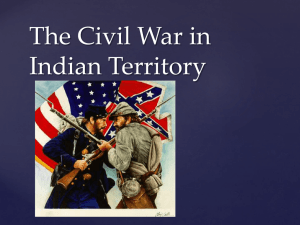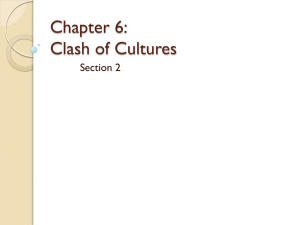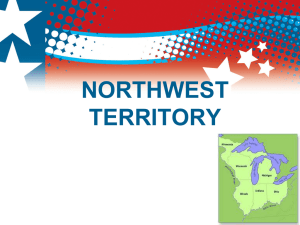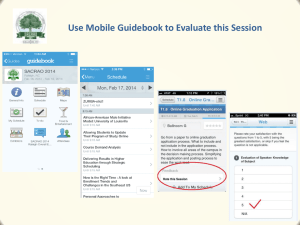oh-chapter 9 notesx - Collinsville Public Schools
advertisement
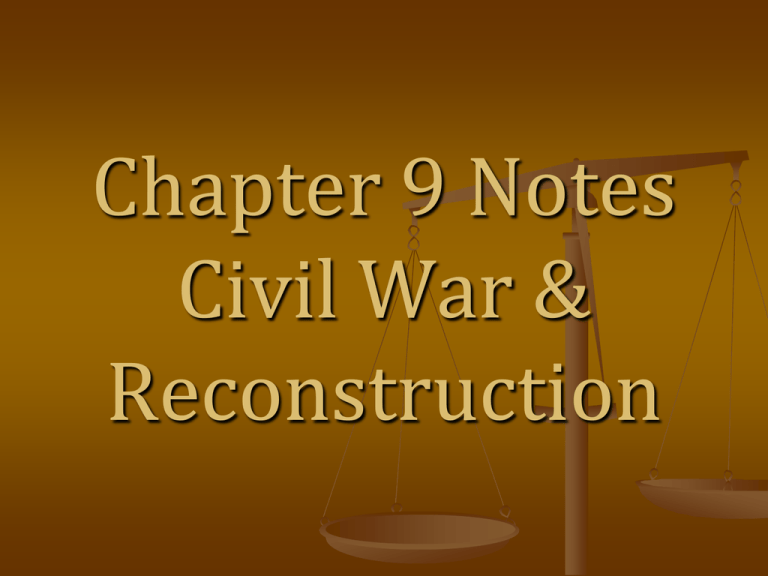
Chapter 9 Notes Civil War & Reconstruction “The Glory Years” Was the 15 years or so between the Indian Removals and the Civil War All the 5 Civilized Tribes EXCEPT the Seminoles adopted constitutions. ( They never committed theirs to writing) • Slavery in the Seminole Nation was noticeably different, as slaves were able to come and go as they pleased, earn money, and live virtually as freedmen A generous Seminole slave “Gopher John” even loaned Lieutenant Canby $1,500 to buy supplies for hungry travelers However, slave rebellion was still a common fear among slaveholders Civil War Alliances Most tribal agents were loyal to the Confederate states…because they believed the U.S. Gov’t had abandoned the people of Indian Territory (The Union was seen to be sided with the Gov’t) They only state bordering Oklahoma, that remained loyal to the Union, was Kansas. Confederates were interested in Ind. Territory as a source of supplies (Grain, meat, and salt mines) Cherokees Divide over Alliances Chief John Ross was a leader that favored neutrality for Indian Territory…sent letters to all tribes advising to stay neutral Stand Watie, an old enemy from removal days, formed the “Stand Watie’s Cherokee Mounted Rifles”…which he recruited members for the Confederacy John Ross became the last chief of the 5 Tribes to sign an alliance w/ the South Alliances con’t… Choctaws were almost in total agreement w/south. . . Signed a treaty w/ Confederate agent Albert Pike on July 12, 1861 (along w/Chickasaws) Creeks signed on July 10, 1861 Seminoles signed Aug 1, 1861 Finally Western Indians signed the Alliance treaty on Aug 12, 1861 Cherokees “voted” to ally and Ross signed the treaty on Oct 7, 1861!! **Creeks met internally, and drafted letter to the Union…declared their neutrality and asked for Union protection that was promised in all their treaties** Battle of Round Mountain Nov 19, 1861 1st battle that took place on Indian Territory Between the Creeks (led by Opothleyahola) and the Confederates Creeks found a new hiding place in “Tulsey Town” aka Tulsa Battle of Honey Springs July 17, 1863 Most important battle in Ind. Territory (present day Muskogee) Like Gettysburg, this was the turning point of the war in the East…and the turning point of the war in Ind. Territory Fort Gibson was recaptured by the Union End of War in Indian Territory July 12, 1862, the Union army surrounded Tahlequah capturing John Ross. . . Who was sent to settle in Philadelphia Stand Watie was awarded rank of Brigadier General in the Confederate Army (only Indian to attain such a rank) Official end of the Civil War was April 9, 1865….Watie was the last to surrender anywhere, and gave up finally on June 23, 1865!! Reconstruction The Choctaws were the only tribe to stay true to the South They admitted to signing treaties siding with the South. . .claiming that as a “separate nation” they had the right to take any steps for their survival Indian Territory map was completely reconstructed Reconstruction Treaties were signed in Washington in Jan 1866 with leaders of the 5 Civilized Tribes • Severity of the treaties varied on the bargaining power held by the individual tribes Cherokees, Creeks, and Seminoles were forced to make citizens of their own slaves Choctaws and Chickasaws were given the option of adopting blacks or having them removed The Treaties did allow for the Ind. Territories to reestablish themselves under their own gov’t Congress then awarded franchises to railroads, along with public grants of land ( Ind. Territory was not protected, like they thought they were promised)
